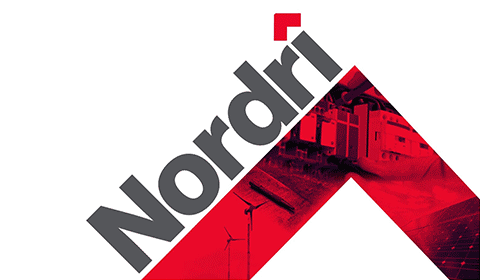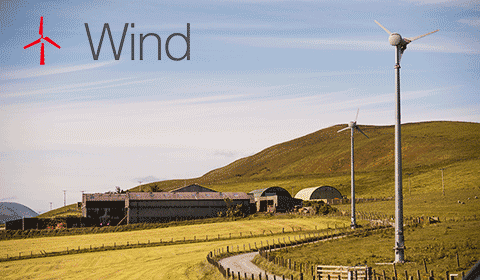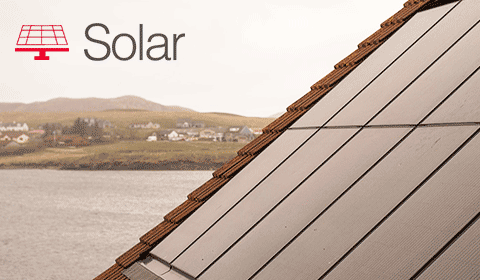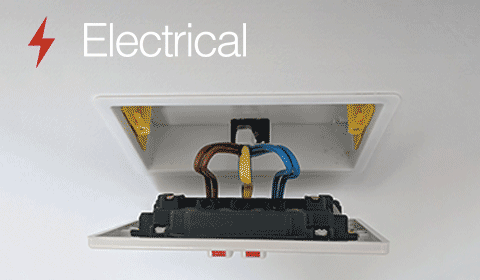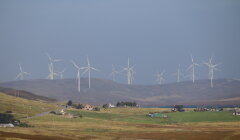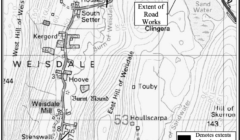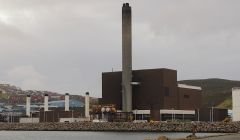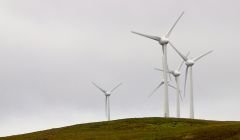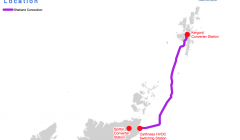Energy / SSEN provides more details about future energy developments as consultation continues
MORE details have emerged this week about possible locations for future energy infrastructure in Shetland, from substations to overhead lines.
SSEN Transmission has been holding consultation events this week as it gathers views on future developments.
One of the largest developments is a northern substation hub, which SSEN Transmission aims to submit a planning application for next year.
Construction could take place between 2028 and 2032, and by 2035 it could be fully complete and integrated into the network.
A number of locations were looked at for the hub in the Scatsta/Sullom Voe area, which were whittled down to a shortlist of four.
These locations are the Scatsta airfield, Scatsta Ness, Fraw Houll (to the south west of the former airport) and the Toft Camp.
This will connect developments like offshore wind and Statkraft’s Beaw Field and Energy Isles wind farms in Yell, and link in a proposed second HVDC cable which would run between Shetland and the Scottish mainland.
The hub would include a 2GW converter station which would connect to the second HVDC link, which would allow the export of power to the mainland.
It would also include a 400kV substation, which would be required to support offshore and onshore generation connections, as well as transmission infrastructure in the area.
Consultation documents reveal that the hub would be located on a footprint around 40 hectares in size.
The substation would be commissioned in 2034.
There would also be a 220kV substation to support future generation and storage connections from third party developers.
Meanwhile for the second HVDC cable, SSEN said it initially identified 23 sites for landfall in Shetland.
Sixteen of these were then ruled out on engineering, community and environmental reasons.
There are now four sites progressing to “detailed design” – Grunnavoe, Toft Ness, Wethersta and Toft Camp.
Become a member of Shetland News
SSEN officials told Shetland News earlier this week that Wethersta was the site they were currently looking at.
SSEN said a marine licence application could be submitted in 2028, with the project completed and energised come 2035.
Meanwhile a “Kergord 2” substation will be needed to change the network voltage from the existing Kergord substation from 132kV to 220kV.
Initial designs suggest that the substation will be required to have a switchgear building, approximately 64 metres in length, 21 metres in width and 15 metres in height.
Also required will be three separate “super grid transformer” buildings, each approximately 74 metres in length 40 metres in width and 15 metres in height.
Two locations have been identified for this development.
The location which is favoured by SSEN at this stage is just south of Lower Voe, to the left of the A970 as you head north.
The other location is off the A968 north of Voe.
One particular point of contention with some in the community stands to be new overhead lines proposed between the northern hub and the Kergord 2 substation, and from there to the existing Kergord substation.
SSEN is proposing two metal lattice structures – described by some as pylons – in parallel between the Kergord substation and Kergord 2, with 250 metres between structures.
These structures could be 28 metres in height, compared the 18-metre high ‘trident’ wooden poles which have been constructed between Tingwall and Sand Water.
SSEN said eight of these structures are needed per kilometre.
Things would ramp up between the Kergord 2 substation and the northern hub, however, as the voltage increases.
SSEN is considering 38-metre high lattice towers for this route, although it would be a single line rather than two in parallel.
Consultation documents suggest there would be three structures needed per kilometre.
They say that energy regulator Ofgem has queried why SSEN is going for 220kV technology rather than the more common 275kV, which would come with larger structures.
The company said the smaller 220kV structures would “offer the right balance between technical performance and reducing visual and environment impacts”.
Lead project manager for onshore projects Cath Swan said the lattice towers would have less effect on the environment than undergrounding the cables.
Three routes between Kergord and the Scatsta area have been proposed, and the preferred option is one that follows the path of the Dales Lees road.
SSEN said this would have less “potential landscape and visual impact, is accessible via the main road network, providing construction and maintenance access, and avoids more sensitive upland peatland environments”.
If consents are in place, construction could commence in 2028 and finish in 2032.
SSEN has also been consulting on matters relating to Yell to allow the planned Energy Isles and Beaw Field wind farms on the island to export power.
A new 220kV circuit will need to be installed connecting a proposed new substation in Yell to the northern hub.
SSEN has identified Burravoe or South Wick of Sound has landfall locations for a new subsea cable to Yell.
On mainland Shetland Mossbank, Grunnavoe, Toft Camp and Toft Ness are under consideration for possible landfall locations.
Timeline estimates suggest this project could be complete in 2032.
Explaining the need for more energy infrastructure on top of that already in Shetland needed for the first HVDC cable and the Viking wind farm, SSEN said:
“The Shetland Islands are uniquely positioned to support Great Britain’s journey to net zero, with a growing number of renewable energy projects, such as both onshore and offshore wind farms, and emerging demand projects, e.g. hydrogen production.
“However, the existing electricity transmission infrastructure on Shetland requires investment to meet this growing demand.
“While the first Shetland High Voltage Direct Current (HVDC) link was the largest that could be installed at that time without overloading other parts of the transmission system, it is no longer sufficient to support the scale of generation and demand now progressing through the development pipeline.”
People still have time to give feedback on the various projects online.
Become a member of Shetland News
Shetland News is asking its readers to consider paying for membership to get additional perks:
- Removal of third-party ads;
- Bookmark posts to read later;
- Exclusive curated weekly newsletter;
- Hide membership messages;
- Comments open for discussion.
If you appreciate what we do and feel strongly about impartial local journalism, then please become a member of Shetland News by either making a single payment, or setting up a monthly, quarterly or yearly subscription.
















